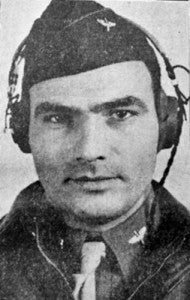Franklin native to be memorialized in Japan
Published 11:45 am Saturday, August 15, 2015
NAGASAKI, JAPAN
The Japanese government will erect a memorial in Nagasaki honoring First Lieutenant Elliott K. Whitfield, a Franklin native killed in a plane crash with others toward the end of World War II. The monument will be dedicated with a service on Sunday, Sept. 13, at 11 a.m.

A photo of First Lieutenant Elliott K. Whitfield that ran in The Tidewater News on Nov. 2 and Dec. 21, 1945, announcing the disappearance of Mr. Whitfield’s plane and the discovery of the crash site. — FILE PHOTO
The creation of the monument was prompted by the discovery of a diary kept by Thomas Humphrey, a British prisoner of war who witnessed the crash.
On Sept. 4, 1945, Whitfield was among the 14-person crew of a B-29 type aircraft completing a mission to drop supplies for prisoners of war in the Fukuoka Camp.
It had rained early in the morning and visibility was poor. In order to make the supply drop, the airplane flew low over the camp, around 1,000 to 1,500 feet, according to Major John W. Farley, an American prisoner of war near Nagasaki tasked by the Japanese civilian police to investigate the crash.
Farley’s report of the event concluded that the aircraft had flown west over a range of mountains near the camp to prepare to make the run to drop food. He supposed that the plane flew east again and struck an obscured peak.
“Had they been flying 100 feet higher, they would have cleared this peak,” the report said.
Only one crew member, Flight Officer Glen Holm, survived the crash. Farley was able to identify only six of the bodies.
“I made a thorough examination and could find nothing that would give me a clue to the [remaining seven’s] identities,” Farley said.
So that the bodies could eventually be returned to the United States, he had the bodies cremated because that’s the custom in Japan and also there were no embalming facilities.
A nondenominational Christian memorial service took place Sept. 11, 1945, at Church Oura, a Catholic cathedral in Nagasaki.
The seven unidentified crew members were returned to America in 1949 and buried together in Jefferson City, Missouri.
Whitfield’s family was immediately notified of the relocation, but were unable to visit the gravesite until 2003.
Louise W. Story, 101, of Newsoms, Whitfield’s last remaining sibling ventured to Jefferson City to see her brother’s grave for the first time on her 90th birthday.
“It was heartbreaking, but I was really glad I could go,” Story said.
With the rediscovery of these events last July, Japanese officials contacted the Past Conflict Repatriations Branch of the Department of the Army, asking them to locate any surviving family of the service members killed. Accordingly, the Department of the Army invited Louise Story and her daughter Virginia Story, as well as W. Elliott Whitfield, Whitfield’s nephew and namesake, to the memorial service.
“We can’t get over to Japan. We wish it was a little closer,” said Virginia Story. “But we’re so glad that he is being honored after all this time.”





